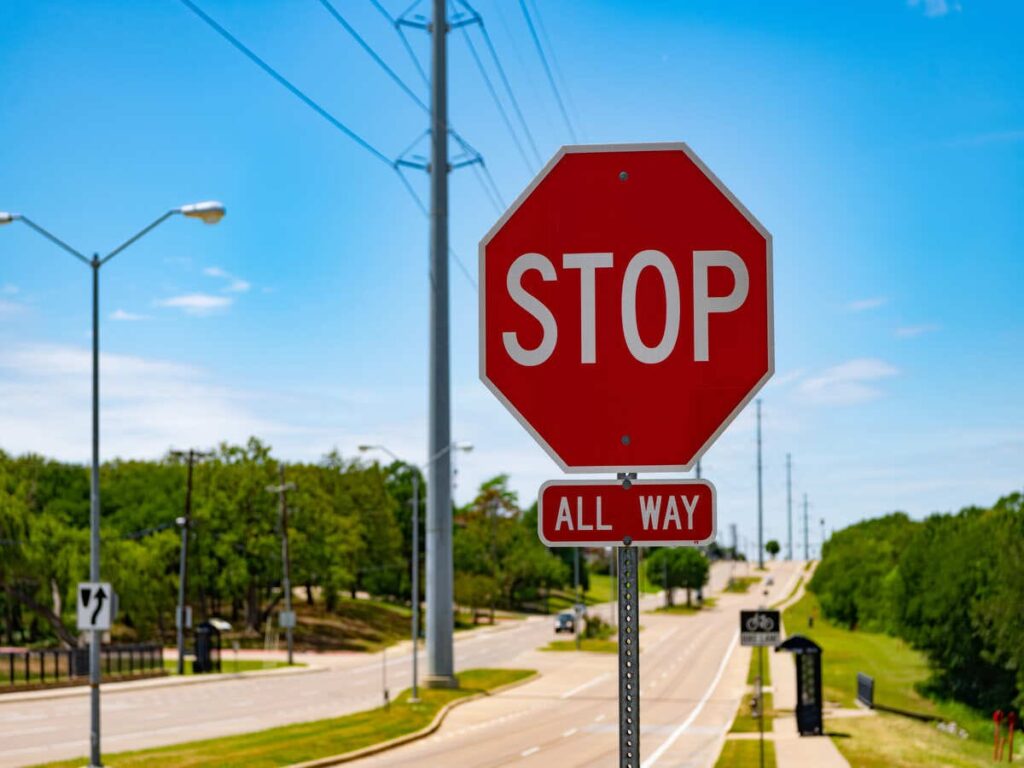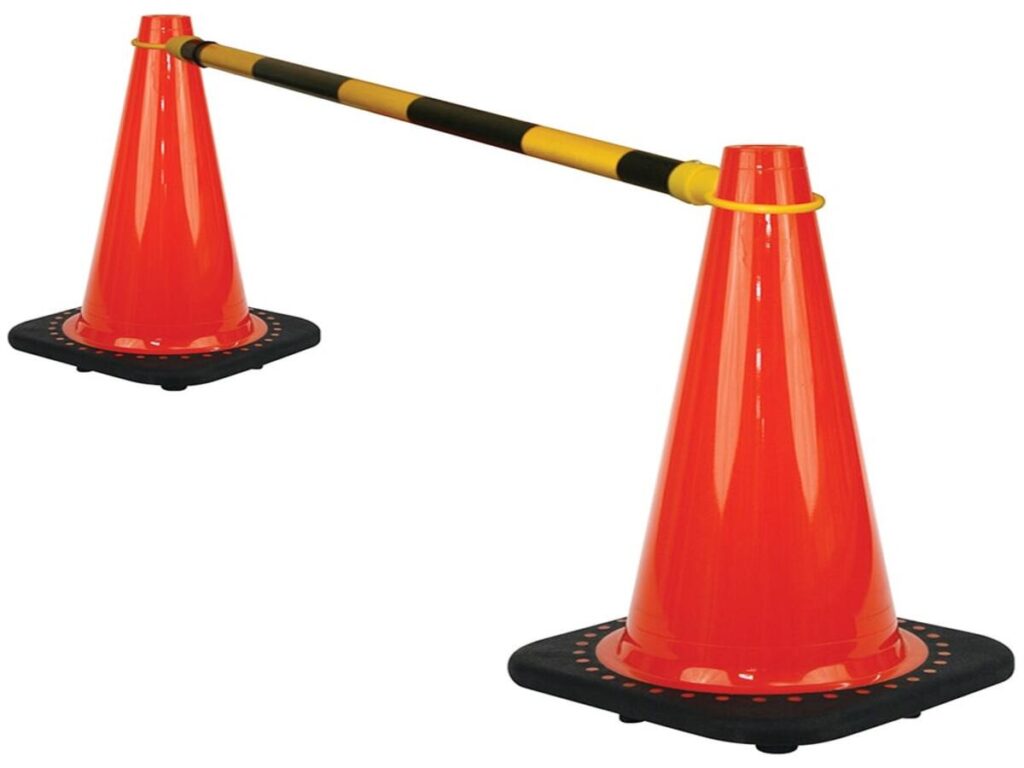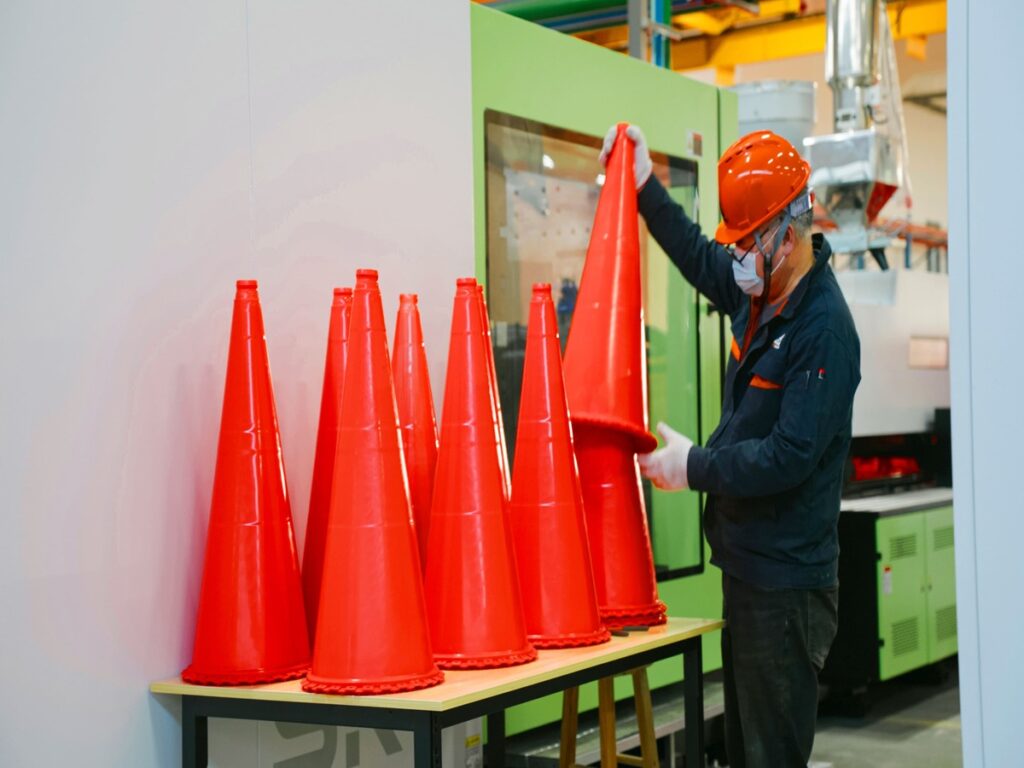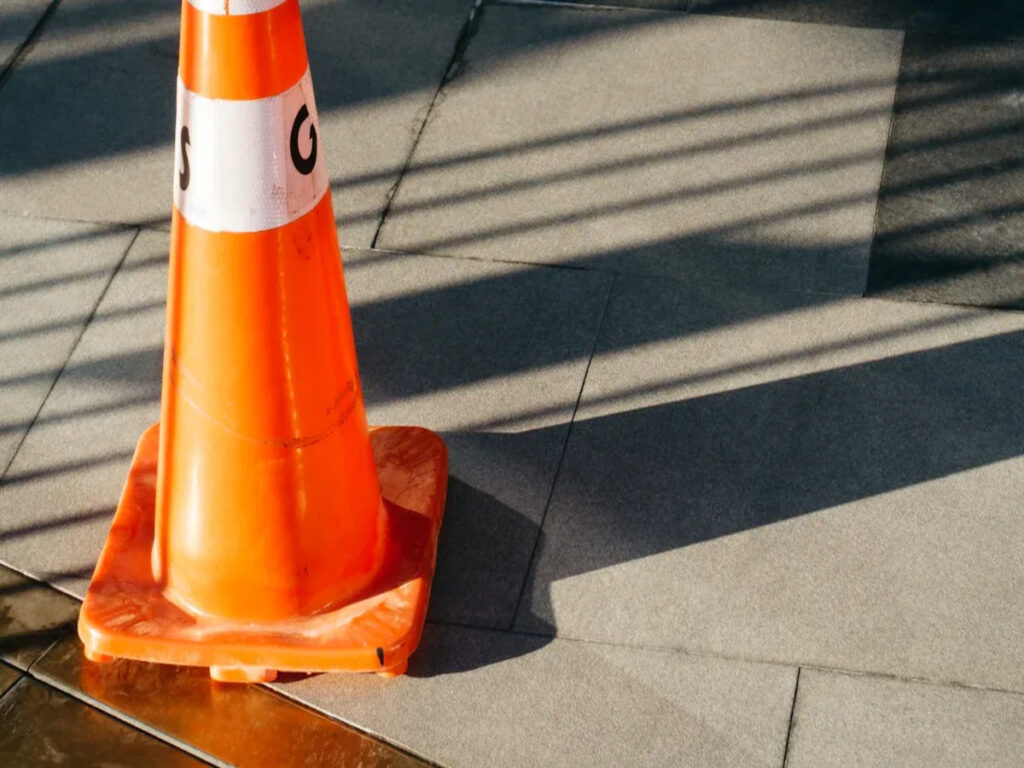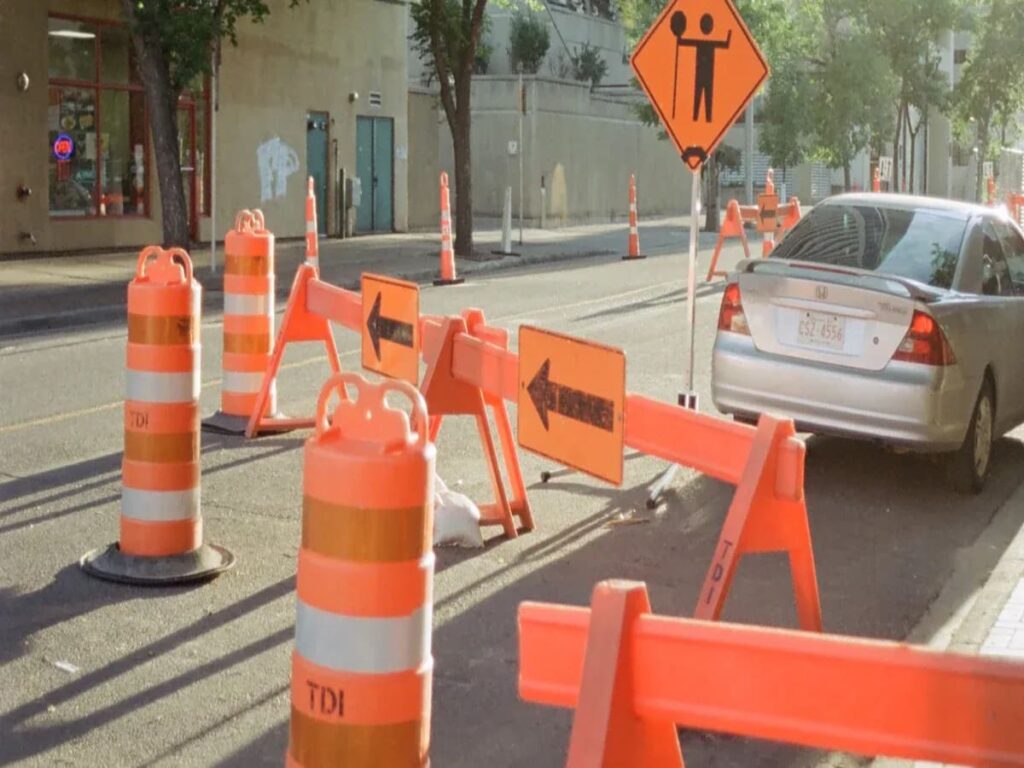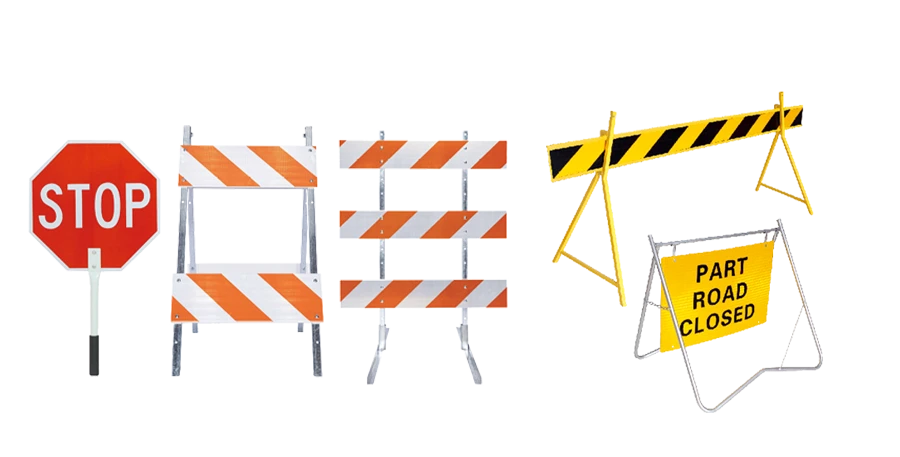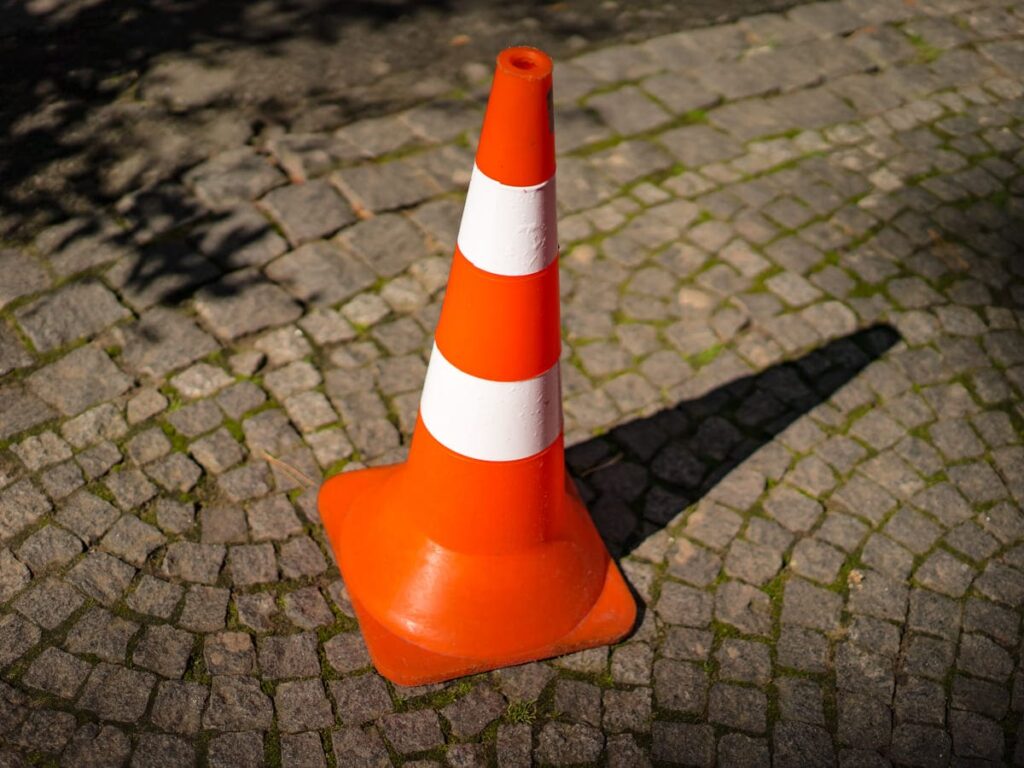
Factories and construction sites use traffic cones to keep workers safe and guide cars. These places need strong safety rules. Traffic cones show dangerous areas and help stop accidents. Wind or cars can knock over traffic cones and make things unsafe. Heavy-duty safety cones do not fall over easily and help keep people safe in busy places. Impact resistance and strong bases help traffic cones stay standing and keep everyone safe.
À OPTRAFIC, Nous fournissons heavy-duty safety cones designed for high-impact environments. Our cones are built with durable materials and strong bases to withstand wind, collisions, et un trafic intense, s'assurer qu'ils restent droits et visibles. Whether you’re managing a construction site, usine, or traffic control zone, our high-quality cones help maintain a safe environment for workers and the public. Choisir OPTRAFIC for reliable traffic safety solutions that stand the test of time.
Principaux à retenir
- Pick heavy-duty traffic cones with strong bases. This helps stop them from falling over in wind or busy places.
- Use cones that are bright and have reflective parts. This makes them easier to see and keeps people safe.
- Choose cones with square bases for outside use. Square bases help cones stay up on bumpy ground.
- Take care of cones and store them the right way. This helps them last longer and work better.
- Follow OSHA and ANSI rules to keep workers safe. This also makes sure you are following the law.
The Challenge of Stability in Industrial Traffic Cones
Common Tipping Risks in Factories
Factories and construction zones use traffic cones for safety. Workers put traffic cones to show safe paths and warn about danger. Wind blows through big open spaces. Vehicles move fast and sometimes hit traffic cones. Machines and forklifts can bump into traffic cones by mistake. These things make traffic cones fall over. When traffic cones fall, they cannot warn people. People might miss danger zones. Temporary traffic control does not work as well. Safety goes down and accidents may happen. Production slows when workers fix fallen traffic cones. Managers see lost time and less work done.
Conseil: Use traffic cones with heavy bases where wind is strong or vehicles move a lot. This helps traffic cones stay up and keeps traffic control working.
High-Risk Zones for Cone Placement
Some places in factories and construction zones need more care. Entrances and exits have lots of traffic. Workers use traffic cones to guide cars and people. Loading docks have trucks and forklifts moving all day. Hazardous material areas need clear marking with traffic cones. Construction zones change often, so traffic control must be flexible. Parking lots and walkways need traffic cones for safety. In these high-risk places, stability is very important. Traffic cones must stand strong to keep everyone safe. Managers pick heavy-duty traffic cones for these spots. They want stability and durability to stop tipping.
- Common high-risk zones for traffic cones:
- Entrances and exits
- Loading docks
- Hazardous material areas
- Zones de construction
- Parkings
- Passerelles
Traffic cones with strong stability help keep traffic control working. They lower accidents and keep construction zones safe. Factories and construction zones trust heavy-duty traffic cones for good safety.
Heavy Duty Safety Cones: Base Design and Materials
Heavy Base vs. Lightweight Cones
Safety cones are important for safety at factories. The base weight helps cones stay up in wind and near cars. Heavy bases stop cones from falling over in strong wind. Wide bases help cones stand up straight. If the weight is spread out, cones stay stable. If the weight is not even, cones can fall over.
Heavy-duty safety cones use thick, tough materials. These cones work best in busy places like construction sites. Lightweight cones are easy to move but can blow away in storms. Heavy bases on orange cones help them last longer in hard places.
Note: Heavy duty safety cones with heavy bases keep traffic control working, even when it is windy or busy.
Here is a quick comparison:
| Fonctionnalité | Heavy Base Cones | Lightweight Cones |
|---|---|---|
| Durabilité | Made for tough jobs and lots of use | May not last as long |
| Stabilité | Big bases stop cones from falling in bad weather | Not as steady in wind or busy places |
| Visibilité | Often have shiny strips for night | May not have shiny strips |
Square Base vs. Round Base
Le traffic cone base shape changes how cones work in tough places. Square bases cover more ground and help cones grip better. This is good for bumpy or soft ground outside. Square bases are used in busy places because they are more stable.
Round bases spread weight out on flat ground. This helps cones not fall over inside. Square bases touch more ground and do not move as much in wind. Cônes orange with square bases are picked for extra safety in factories.
- Square base benefits:
- More ground touch for better balance
- Good for wind or busy places
- Best for outside and bumpy ground
- Round base benefits:
- Spreads weight on flat ground
- Good for inside or safe places
Material Choices for Durability
Le material used makes cones last longer and work better. Factories use cones made from rubber, HDPE, or PVC. Rubber bases are heavy and grip the ground well. They do not blow away or fall over easily. Many rubber bases use recycled stuff, which makes them strong.
Weighted bases make cones heavier and more steady. These bases work with signes or lights. Orange cones made from strong stuff last longer and do not crack in bad weather.
| Type de matériau | Caractéristiques clés | Applications |
|---|---|---|
| Caoutchouc | Lourd, constant, recyclé, does not slip, dure longtemps | Autoroutes, routes très fréquentées, long jobs |
| Weighted Bases | Extra weight, constant, holds signs or lights | Busy, windy places |
| HDPE / PVC | Plis, does not break, safe in sun | Factories and building sites |
Heavy-duty safety cones made from strong stuff keep workers safe. Orange cones with heavy bases and tough materials work well in hard places and last a long time.
Wind and Impact Resistance in Heavy-Duty Traffic Cones
Windproof Features for Open Spaces
Industrial sites can have strong winds in big open areas. Wind can knock over traffic cones if they are not made right. Heavy-duty traffic cones have heavy bases to help them stay up. Makers put extra weight at the bottom so cones do not fall in strong wind. This helps cones stay in place when the wind gets strong.
Weighted traffic cones work well in open spaces. The base shape helps stop cones from tipping over. These cones help workers see safety zones, even in storms or windy weather. Workers trust these cones to stay up and easy to see. The table below shows how different cones handle wind:
| Type de cône | Poids | Angle de basculement | Wind Speed Resistance |
|---|---|---|---|
| Cône PVC | 7 kg | 45° | Faible |
| Cône PVC | 10 kg | 55° | Modéré |
| Enviro-Cône | 7 kg | 76° | Haut (jusqu'à 270 mph) |
Traffic cones that resist wind help keep workers and gear safe. These cones stop accidents and help work keep going in bad weather. Managers pick cones with heavy bases for open yards and factory doors. This choice keeps people safe and helps work not slow down.
Conseil: Put weighted traffic cones where wind is strong so they stay up and easy to see.
Impact Resistance Against Vehicles and Equipment
Factories and building sites have lots of moving trucks and machines. Traffic cones can get hit by trucks, chariots élévateurs, or other machines. Heavy-duty traffic cones use strong plastic and rubber to stay tough. These materials help cones take hits and keep their shape.
- Heavy-duty traffic cones use strong plastic and rubber.
- They are made to stay up in strong wind.
- These cones can take hits from big trucks and not break.
Traffic cones that resist impacts do not break or bend fast. Workers trust these cones to show danger spots, even when trucks drive close. Par exemple, a forklift might hit a cone while moving stuff. The cone stays up and keeps warning people. This helps stop accidents and keeps the area safe.
Managers pick cones that resist impacts for busy loading docks and truck paths. These cones last longer and do not need to be replaced as much. Dans des endroits animés, impact-resistant cones help keep people safe and work moving.
Note: Traffic cones that resist both wind and hits give the best safety in factories.
Visibility and Compliance for Factory Traffic Cones
Reflective Bands and High-Visibility Colors
It is important for workers to see heavy-duty safety cones. Bright orange or yellow cones are easy to spot. Ces colors help cones stand out in busy places. Reflective bands on cones bounce light back to drivers. This makes cones easy to see at night or in dark spots. Bright colors and reflective bands help cones not blend in.
Cônes de trafic réfléchissants are made for dark or dim areas. The shiny film on them glows when lights hit it. This helps drivers and workers see cones fast. Cela réduit les risques d’accidents. Factories use reflective cones at entrances, Docks de chargement, et passerelles. These places can get dark or have changing light.
The table below shows what is needed for cones to be seen in factories:
| Type de preuve | Détails |
|---|---|
| Exigences de hauteur | Tall cones with shiny collars are best for fast areas. |
| Matériaux réfléchissants | OSHA says cones must have shiny bands in dark places. |
| Color Standards | Bright orange is the main color for cones. |
| Directives de placement | Cone spacing should fit the road and speed for safety. |
Meeting OSHA and ANSI Standards
Factories must follow rules to keep workers safe. OSHA and ANSI make the rules for traffic cones in these places. These rules make sure cones are easy to see and protect people.
- Osha dit des cônes must be put in the right spots for safety.
- Work zones need cones to control traffic for a short time.
- OSHA wants a plan for using cones and other safety steps.
- If warning signs do not follow rules, OSHA and MUTCD rules are used.
- If warning tools are missing in moving jobs, there can be fines.
- Pas suivant Règles Mutcd for worker and walker safety can mean penalties.
Following these rules helps stop accidents and keeps factories safe. Reflective and bright cones help meet OSHA and ANSI rules. Managers should check that their cones follow these rules for safety and visibility.
Customization and Practical Considerations
Custom Colors, Logos, and Messaging
Factories sometimes need traffic cones that are not standard. Custom colors help teams show different zones or dangers. Some companies put their logos or messages on cones. This makes safety rules easy to see for everyone. Special messages can tell visitors what to do or warn workers. Company logos on cones make the site look professional. Cela permet également de respecter les règles de sécurité. Some jobs need certain colors, so custom cones make sure the right one is used.
Stockage, Stackability, et maintenance
Taking care of traffic cones helps them last longer. Teams should do these things:
- Wash cones with gentle soap and water to keep them bright.
- Store cones standing up in a dry, clean place, away from sun and heat.
- Stack cones gently so the bottom ones do not get squished.
- Check cones often for cracks or fading. Replace any that are damaged.
Cônes empilables are easy to store and move. The table below shows why stackable cones help with traffic control:
| Fonctionnalité | Avantage |
|---|---|
| Stackable design | Saves space and makes moving cones simple |
| Léger, écurie | Easy to use and stays steady |
| Configuration rapide | Fast to put out in emergencies |
Supply Chain and Total Cost of Ownership
Factories need to think about all the costs of traffic cones. The table below lists important things to consider:
| Facteur | Description |
|---|---|
| Purchase Price | The first cost to buy strong traffic cones. |
| Frais de maintenance | Money spent to keep cones clean and working well. |
| Fréquence de remplacement | How often cones need to be changed, which changes the total cost. |
| Considérations environnementales | How cone materials affect the planet and save resources. |
Buying good cones saves money because they last longer. Buying many cones at once can make each cone cost less. Problems in the supply chain can make cones hard to find or more expensive. This is true for cones with special things like shiny bands or heavy bases. Factories may buy lots of cones at once to avoid running out and to save money.
Choosing the Right Heavy-Duty Traffic Cones for Your Site
Key Selection Criteria Checklist
Picking traffic cones for a factory needs careful thought. Managers must check if cones are stable and strong. They also need to follow safety rules. Use this checklist to help teams pick cones that keep workers safe and stop accidents:
| Critères | Description |
|---|---|
| Color Consistency | Same color means good quality and helps cones stand out. |
| Seamless Finish | Smooth cones stop cuts and show they are made well. |
| Secure Collars | Reflective collars should be tight and hard to pull off. |
| Weight and Balance | Heavy cones do not fall over in busy or windy places. |
| Flexibility Test | PVC cones should bend and go back to normal, showing they are tough. |
| Certifications to Seek | ISO 9001 means the cones are made with high standards. |
| Customization and Ecosystem | Makers should let you pick colors, logos, or messages for your site. |
| Holistic Approach to Safety | Suppliers with many safety items make buying easy and keep quality high. |
Conseil: Managers should look at each cone’s weight, couleur, and collar before buying many cones. This helps stop accidents and keeps safety rules strong.
Industrial safety managers use traffic cones to make safe areas. They help guide cars in places where accidents can happen. Heavy-duty safety cones are strong and do not tip over easily. These cones can take hits and still stand up. Using these cones helps stop accidents and keeps work going.
- Bright cones help drivers know where to go.
- Putting cones in the right spots shows safe paths and warns workers.
- Flexible cones can make crashes less bad by 60%.
- Fast setup helps keep work zones safe in emergencies.
Talk to our team if you want help or need a price for safety products.
FAQ
What makes heavy-duty traffic cones suitable for harsh conditions?
Heavy-duty safety cones are made from strong materials. They have a stable base that helps them stay up. These cones do not fall over in wind or when hit by cars. They work well in places like factories and warehouses. They are also good for road construction zones.
How do traffic cones improve safety measures in industrial sites?
Traffic cones show where danger zones are. They help guide cars and trucks safely. Workers can see where it is safe to walk. These cones make hazards easy to spot in any weather.
Why is wind resistance important for traffic safety?
Wind resistance helps cones stay up in strong wind. This keeps them from falling during storms or gusts. Cones that do not blow away help keep workers safe.
Can traffic control devices like cones handle impacts from vehicles?
Oui. Many cones are made with materials that can take hits. Trucks or forklifts can bump into them and they do not break. These cones keep their shape and stay where they are needed.
How should factories choose cones for different conditions?
Factories should check the weight of the base and the material. They also need to look at how easy the cones are to see. Picking the right cone for each area helps keep everyone safe and work running smoothly.

